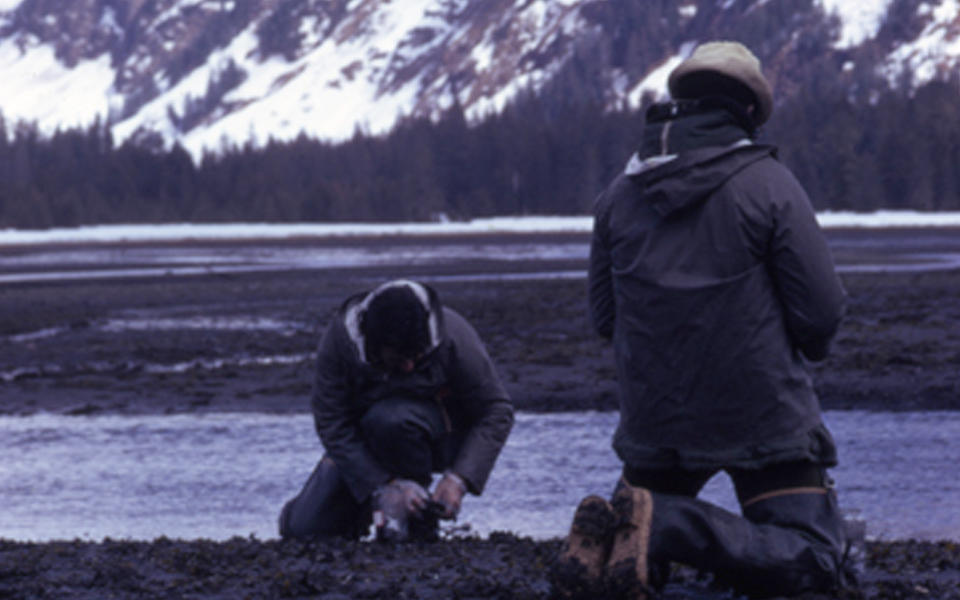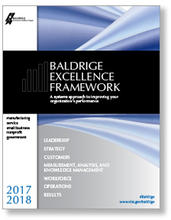Blogrige
The Official Baldrige Blog

The Baldrige Excellence Framework encourages organizations to create an environment for innovation through pursuing intelligent risks. How do you know whether a new idea is an intelligent risk, and therefore worth pursuing? How do you know if the resulting change is an innovation? An experience from my early days as a bench chemist—which involved a creative solution to a leaking sink—shows that not all out-of-the-box ideas are intelligent risks leading to innovation.
In those early days, I had the opportunity to spend considerable time in the Prince William Sound of Alaska conducting environmental sampling to measure how pristine the environment was before the Trans Alaska Oil Pipeline went into operation. The work was challenging because we were developing chemical analysis methods to measure “close to zero” pollution levels. Our base of operations was the town of Valdez, which at that time had no paved runway and no hotels. We rented a rundown, two-story house that was barely fit for habitation and therefore available to visiting scientists!
On one of our trips, the drain in the second-floor bathroom sink was leaking and constantly creating a puddle on the floor. The pipes were old and likely to break if they were manipulated. Nevertheless, repair was needed, so we notified the owner of the house. He came and inspected the leak, then ran back and forth between the bathroom and the kitchen on the first floor. He finished his inspection, said he needed some tools and would return shortly. He came back with an electric drill and drilled a hole in the middle of the puddle. The water drained and went into the kitchen sink, which was right below the puddle. Clearly, a novel solution to the problem, but was it an innovation to be replicated in other houses and did it represent an intelligent risk?
Baldrige defines innovation as, “Making meaningful change to improve products, processes, or organizational effectiveness and create new value for stakeholders…. Innovation benefits from a supportive environment… and a willingness to pursue intelligent risks.” Intelligent risks are “opportunities for which the potential gain outweighs the potential harm…”
Now let’s return to the leaky sink. Was the new bath and kitchen design an innovation? Baldrige would say “no” on two counts. The new product was a house that traded a wet floor for wet unsanitary hands, wet wood in the ceiling, and potentially contaminated dishes, silverware, and glasses. The change was not a meaningful change that improved the product and it certainly did not create any new value for the renters. If anything, we were grossed out by the brown water that came down through a ceiling with rafters that had been in place for many decades.
And was it an intelligent risk? Certainly not, because the potential gain (a dry floor) did not outweigh the potential harm to us nor to the owner as he drilled through a puddle of water with an old electric drill, potentially creating both an electrical shock and a blown circuit.
Significant change alone is not innovation. It must yield stakeholder value. And risk alone is not always intelligent risk. The potential gain must outweigh the potential harm. The key word in this last sentence is potential. We cannot guarantee that an intelligent risk will yield a beneficial outcome, but the potential must be there. Taking an intelligent risk may result in failure, but failure that was worth the risk and therefore should be recognized as a positive activity from which we learn.
Do your organization’s innovation process and intelligent risks match up to the Baldrige approach? Or are you making meaningless change? Are you draining the puddle and “infecting” key stakeholders?
A Systems Approach to Improving Your Organization’s Performance

Baldrige Excellence Framework
The Baldrige Excellence Framework has empowered organizations to accomplish their missions, improve results, and become more competitive. It includes the Criteria for Performance Excellence, core values and concepts, and guidelines for evaluating your processes and results.
Purchase your copy today!
Available versions: Business/Nonprofit, Education, and Health Care
About the author
Related Posts
Comments
January to February 2018 is a period of performance assessment session for some of Indonesia State Own Companies, by using Baldrige Excellence Framework. This article is be a clear and an useful reference. Thank you so much.






This article definitely peaked my interest as many organizations have a difficult time determining what Innovation is (vs changes or improvements). I would recommend that some form of this be included in the Quest for Excellence conference as the Examiner Training sessions. Well done!